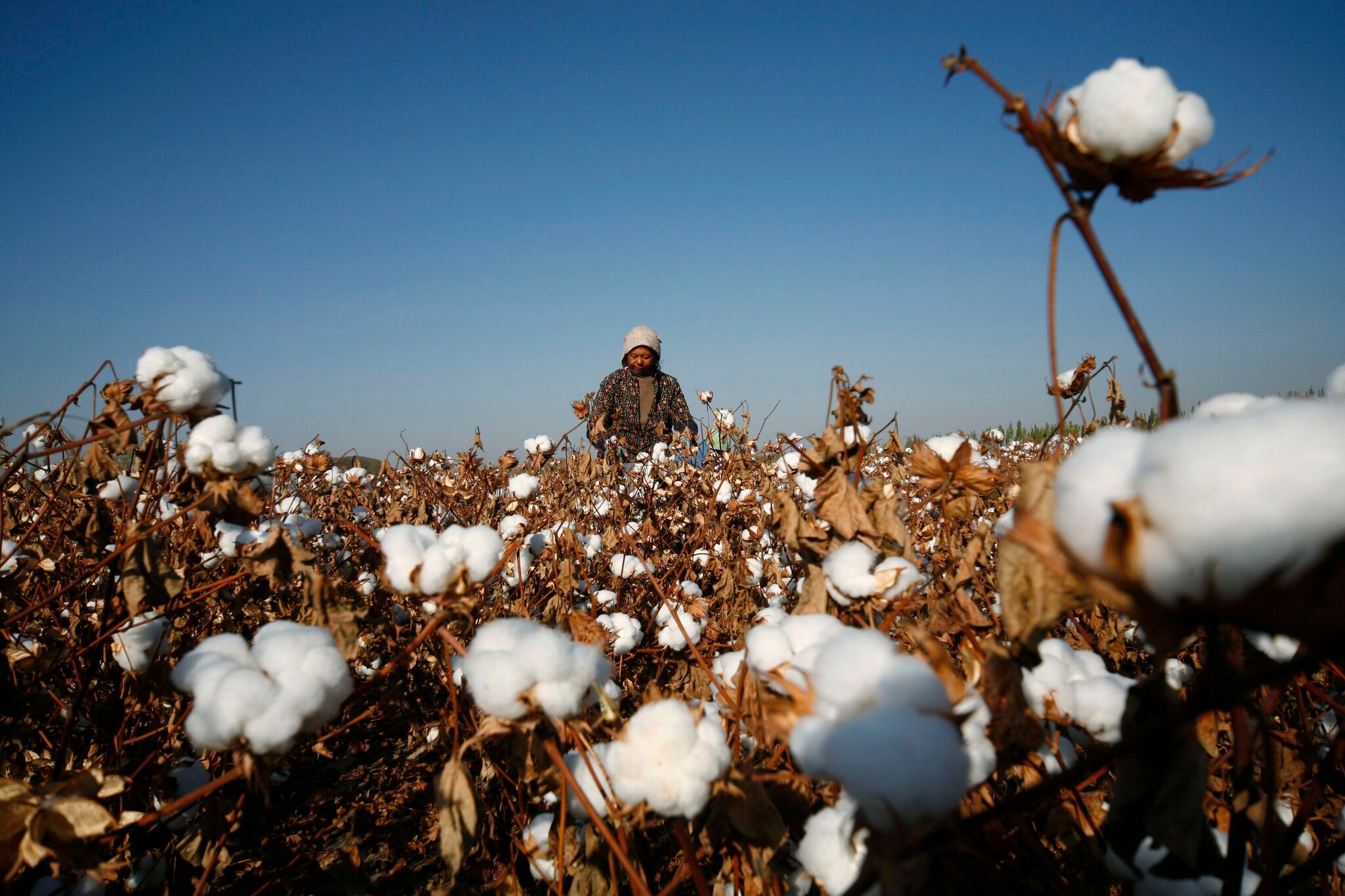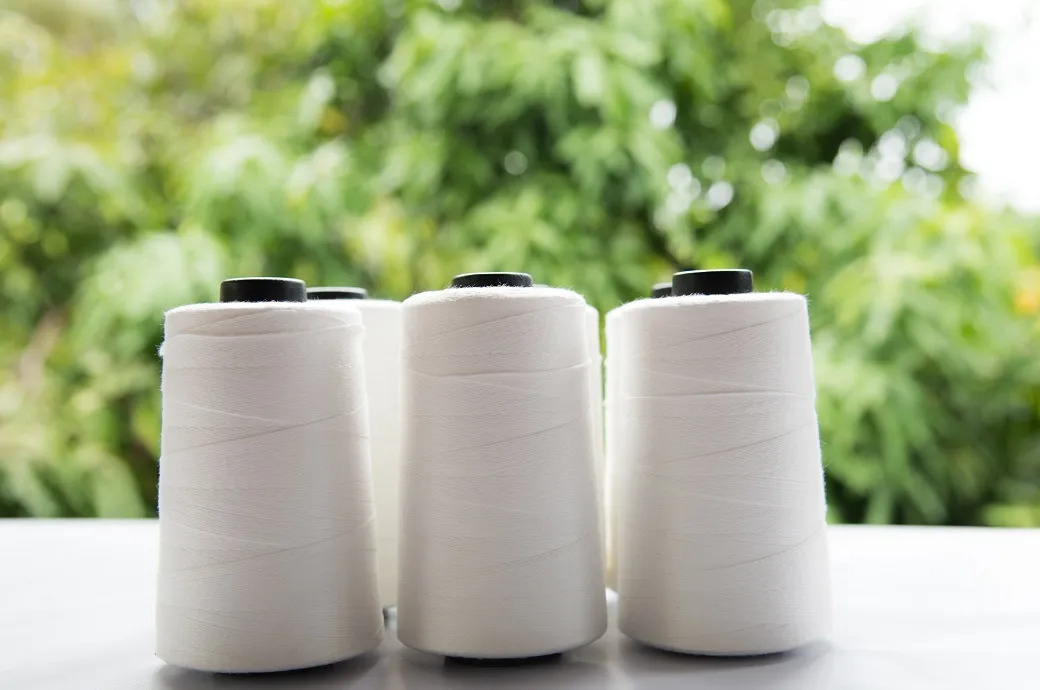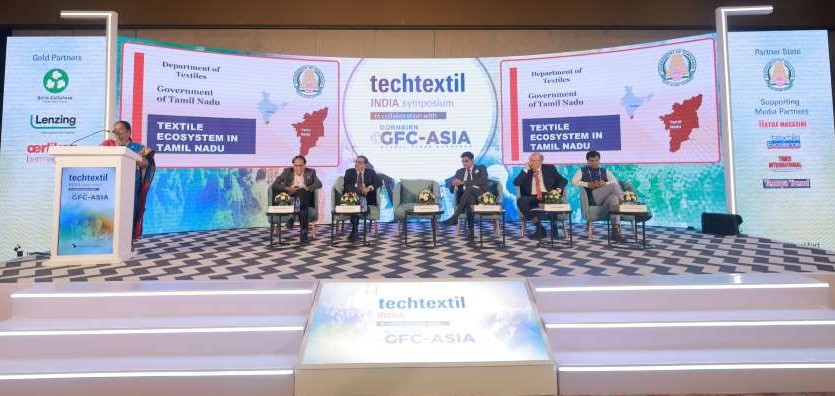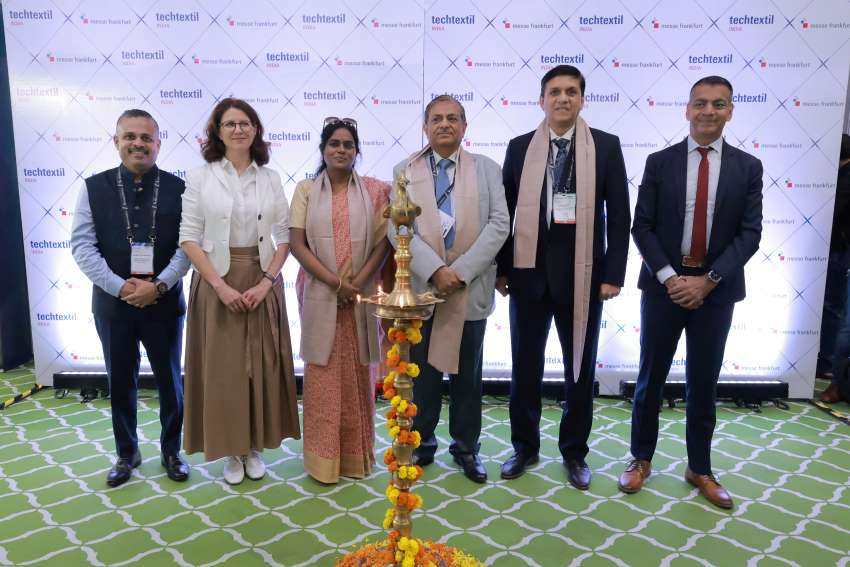FW

A new report from the H&M Foundation and Accenture reveals that the fashion industry has reached a critical inflection point, warning that incremental innovation alone is insufficient to meet climate targets. Instead, the ‘From Signals to Systems Change’ report advocates for a radical reimagining of the entire textile value chain, driven by scaled-up, early-stage innovations that simultaneously tackle decarbonization and social justice.
The analysis, published in October 2025, lays bare the industry's carbon hotspots while spotlighting the 2025 Global Change Award (GCA) winners as catalysts for this transformation.
The urgency is about where the carbon is
The report underscores that the current linear model is highly carbon-intensive, with more than 90 per cent of emissions concentrated upstream in production and downstream in consumer use. Shifting these processes away from fossil fuels and virgin resources is crucial. The System Map breaks down the major emission drivers in the current fashion system.
Table: Textile/apparel value chain carbon emissions
|
Value chain stage |
Estimated carbon emissions concentration |
|
Yarn and Fabric Production |
52% |
|
Consumption (Use phase, laundry, transport) |
32% |
|
Fibre Production (Raw material processing) |
11% |
|
Garment Production |
5% |
"The figures are staggering, but they offer a clear compass," said a spokesperson for the H&M Foundation. "If we want to reach net-zero, the industry must move its focus from simply tweaking the edges to fundamentally redesigning the beating heart of the system, where materials are made and how we consume"
The new normal, climate as the design brief
The industry is not just under internal pressure; it is being reshaped by a growing era of polycrisis. Geopolitical uncertainty, tightening regulations (like the EU's CSDD), and increasing climate risks are forcing radical adaptation. The report notes, for example, that extreme heat (like the 2024 heatwave in Bangladesh) affects an estimated 66 million textile workers, creating an urgent need for climate-adaptive workplaces. This environment is leading to what the report terms the ‘Reimagined System Map’, where design no longer starts with a blank slate, but with what already exists surplus and recycled materials.
The Global Change Award (GCA) 2025 winners highlights the solutions, showcasing how early-stage innovation can deliver massive returns for both the planet and people. Accenture applied its 360-degree value approach to estimate the potential impact of scaling these ideas globally by 2050.
Table: GCA innovation & estimated annual impact by 2050
|
GCA innovation |
Innovation focus |
Estimated annual impact by 2050 |
|
Renasens |
Waterless recycling of blended textile waste. |
570,000 metric tons of CO2 emissions saved. 160 billion litres of water saved. |
|
Loom |
Digital upcycling platform connecting wardrobes with designers. |
Creation of 30,000 new designer job opportunities annually. |
|
PulpaTronics |
Laser-printed, metal-free RFID tags on paper. |
3,000 tons of e-waste reduced (equivalent to 18 million smartphones). |
|
The Revival Circularity Lab |
Community-led upcycling and education (Kantamanto Market, Ghana). |
People & Social Impact: Empowered local artisans, fair livelihoods, and scaling textile waste diversion through a just transition. |
The data confirms that resource-efficient technologies are ready to revolutionize supply chains. The Renasens case, for instance, highlights a waterless recycling process that could save water comparable to the average annual drinking consumption of 200 million people, while significantly reducing carbon output. Meanwhile, Loom offers a digital model that moves beyond simple efficiency, focusing on empowering individual creators. Its platform for connecting existing wardrobes with designers could generate income for tens of thousands of designers, shifting power dynamics in the design phase.
For communities, the work of The Revival Circularity Lab emphasizes that systems change must be just. By tackling the global textile waste crisis through local upskilling and fair livelihood creation in places like the Kantamanto Market, they make essential workers from sorters to artisans visible and valued.
A call for radical collaboration
The report emphasizes that no single actor can drive this transformation alone. It requires what it calls a symbiosis between suppliers, brands, investors, and communities.
“The next stage of this journey is not about finding the next ten great ideas, but about radically scaling the proven ideas we already have,” says Maria Persson, a Sustainability Analyst at Accenture, speaking on the report's findings. “This means shifting capital, sharing infrastructure, and ensuring policy mechanisms not only penalize polluters but actively reward and de-risk the innovators. When changemakers thrive, systems change follows.”
The future of fashion, the report concludes, will be shaped not by a single dominant brand or one technological breakthrough, but by a collective, bold movement toward a decarbonized and human-centered circular economy.
Known for its heritage-inspired designs, home décor brand Vedas Exports aims to grow its physical footprint to 12 outlets by 2026-end, employing a flexible growth model that mixes company-owned stores with franchise operations.
Vedas Exports debuted its first two flagship stores, branded as Vedas Homes, in India's burgeoning Tier-II markets. The successful openings in Jamshedpur (June 2025) and Ranchi (August 2025) validated the strategy of tapping into high-potential, underserved regions. Both 650-sq-ft boutiques immediately exceeded pre-launch sales targets and sustained strong performance through the recent festive season.
Palash Agrawal, Founder, notes, customers want to connect with products that tell a story—like a handmade brass figurine or a modern wall installation based on Vedic design philosophy. Vedas Exports is building an ecosystem that connects Indian craftsmanship with discerning modern homes.
The brand's diverse product portfolio spans brass, ceramic, and polyres in items, ranging from sculptures and wall art to sophisticated tableware, priced affordably from Rs 500 to Rs 80,000. By targeting non-metro markets, the brand is leveraging rising purchasing power and aiming for stronger margins compared to the hyper-competitive urban retail centers.
Vedas Exports is strategically positioned to capitalize on India's booming home décor industry, which is expanding at an impressive 12 to 15 percent annually. Its next phase of expansion, focused on Central and Eastern India, begins with a third company-owned store in early 2026, followed by the mid-year rollout of its franchise program.
The Bangladesh Garment Manufacturers and Exporters Association (BGMEA) is urging the government to push for a three-year delay in the country's transition from Least Developed Country (LDC) status. This deferral, the group argues, is crucial for helping the ready-made garment (RMG) sector remain sustainable after the graduation takes effect.
Speaking at a roundtable hosted by The Financial Express, titled ‘Business Climate: Reforms, Opportunities, and Challenges Ahead,’ Inamul Haq Khan, Senior Vice President, BGMEA, emphasized the need for the extension. He detailed the needs for several reforms intended to lower the cost of doing business. These included providing low-cost financing for industries and offering special and concessional loans for Small and Medium Enterprises (SMEs) and green initiatives, adjusting tariffs for electricity, gas, and port services and eliminating requirements, such as the bond license needed to open back-to-back Letters of Credit (LCs).
Khan also stressed the importance of improving logistics and regulatory alignment among key bodies: the National Board of Revenue (NBR), Bangladesh Bank, and the ports. He called for a dramatic improvement in the efficiency of the Chattogram port.
Further, Khan pushed for the immediate establishment and operation of the third Floating Storage Regasification Unit (FSRU) to resolve persistent gas shortages.
He also highlighted, export incentives have been cut by over 60 per cent. Although the government had promised alternative support mechanisms, these have reportedly not yet been implemented.
To secure future trade, Khan called on the government to accelerate negotiations for Free Trade Agreements (FTAs) and Economic Partnership Agreements (EPAs) with major partners, including the EU, UK, Japan, Canada, China, India, Korea, Eurasia, and ASEAN countries. Finally, he advocated for demand-driven training and technology adoption programs to boost skills and productivity within the RMG sector.
The event saw several high-profile attendees, including Lutfey Siddiqi, Special Envoy on International Affairs to the Chief Adviser, who attended as the chief guest. Special guests included Md Anwar Hossain, Secretary. Ministry of Science and Technology, and Mohammad Hasan Arif, Vice Chairman, Export Promotion Bureau (EPB). Shamsul Huq Zahid, Editor and CEO of The Financial Express, chaired the session, which was moderated by Shiabur Rahman Shihab, Head of Online and Digital Content, FE.
An emerging leader in professional textiles, ISKO Pro is set to debut at the A+A trade show, focusing on its dedication to circularity and high-performance fabrics.
At the ISKO Pro exhibit, visitors can see their fabrics in action through products created with industry giants like Kentaur, UVEX, and Havep. These collaborations demonstrate how durable, high-performance textiles made with recycled fibers are already being used in real-world workwear solutions.
ISKO Pro will also take part in the panel discussion, ‘The Next Generation of Workwear: Built to Perform, Engineered for Circularity.’ The company will join RE&UP, UVEX, and Kentaur to explore how performance, durability, and sustainability can all coexist in the workwear industry.
Moderated by Cheryl Müehlen, the session will feature Baris Ozden, Product Development Director, ISKO Pro; Andreas Dorner, General Manager, RE&UP Recycling Technologies; Dr. Alexander Jacob, R&D, UVEX Safety Textiles and Line Nygaard Jensen, Kentaur
The discussion will highlight real-life applications of fabrics made with next-generation recycled fibers, address current technical hurdles, and present the commercial case for adopting sustainable workwear, especially in light of upcoming EU regulations.
Central to ISKO Pro’s innovation is RE&UP, a cutting-edge textile-to-textile recycling technology. RE&UP transforms post-industrial and post-consumer cotton and polyester waste into premium fibers.
Through RE&UP’s proprietary process - which includes sorting, deconstruction, and re-spinning - these waste fibers are given new life in ISKO Pro fabrics. This enables genuine circularity without compromising the fabric's essential performance characteristics.
ISKO Pro fabrics merge performance engineering with circular goals, offering long-lasting materials suitable for demanding work settings, a soft feel for all-day comfort, over 70 per cent recycled content with GRS certification and patented weaving and spinning technology that boosts durability.
ISKO Pro and RE&UP are providing a comprehensive textile-to-textile solution, effectively helping to close the workwear loop and establish a path for the future of sustainable professional textiles.
Baris Ozden, Product Development Director, ISKO Pro, says, by integrating RE&UP’s recycled fibers into their patented fabric technologies, ISKO Pro delivers durability, comfort, and circularity.
A division of SANKO, ISKO Pro combines the resources of a global textile leader with a mission to push circularity in professional workwear. By using patented fabric technologies and over 70 per cent recycled fibers, ISKO Pro delivers durable, comfortable, and high-performance fabrics that meet GRS standards.
Authentic Brands Group's Juicy Couture is stepping up its fashion game this month with the global launch of its new denim collection on November 17.
The collection is being heralded as a bold evolution for the cult label, which is famous for defining Y2K glamour. Two decades after the world became obsessed with Juicy's iconic velour tracksuits, the LA-born brand is expanding its reign by reinterpreting its signature confidence and playful style through a new lens: denim.
The company noted, the day-to-night collection merges ‘LA attitude with contemporary style’ and aims to celebrate individuality through flattering, feminine silhouettes and premium detailing.
The range includes everything from low-rise flares that channel ‘unapologetic early-aughts energy’ to wide-leg jeans designed with ‘serious main-character appeal.’
Key pieces in this debut collection include the Diamanté Booty Short and Diamanté Wide Leg, the Dog Crest Bootcut Jean and Dog Crest Skirt, The JC Crest Flare Jean and JC Crest Pleat Skirt and the Midrise Bootcut Jean
These items are made with ‘premium’ cotton denim and feature signature Juicy touches, such as embroidered logos, crystal trims, and classic hardware.
The supporting marketing campaign aims to embody a new kind of Juicy girl: ‘bold, empowered, and effortlessly sexy.’
Authentic Brands Group has been actively building the Juicy Couture business over the past year. The brand made a highly anticipated return to physical retail in London last December with a new store at Westfield. In March this year, Juicy Couture secured a deal to enter the Indian market. Last month, the brand tapped two-time WNBA All-Star and cultural icon Angel Reese as its new global ambassador and creative collaborator, while also boosting its beauty business.
French Breton clothing brand Saint James is introducing a groundbreaking collection called Phospho, which, for the first time for the brand, features phosphorescent elements inspired by natural marine bioluminescence.
Unveiled at the MIF Expo trade fair in Paris (running November 6–9), the collection includes classic Saint James pieces: the signature marinière (Breton striped shirt), a sailor's jumper, and a beanie. In a playful twist, the line also offers a ‘Toutoupull’—a matching jumper designed for dogs.
The Phospho items are priced at €129 for a marinière and €199 for a jumper. They are designed to emit a green glow for one to two hours after being exposed to natural or artificial light for three hours.
This unique luminous effect is achieved through a polyester yarn that incorporates non-toxic mineral pigments. These pigments are integrated into the yarn during the manufacturing process to ensure safe and lasting illumination.
With 400 employees and approximately €70 million in export turnover, Saint James is already preparing another first for the upcoming spring season: the brand's first-ever linen marinière. Luc Lesénécal, CEO, says, the and economic instability. This uncertainty has prompted him to postpone plans to expand the Saint James factory located in the brand's namesake village.

Once considered a fringe movement, circular fashion is rapidly becoming a mainstream business reality. The linear model of ‘take, make, dispose’ that has long dominated the apparel industry is no longer sustainable, as evidenced by the staggering statistic that global garment production has doubled since the year 2000. Forward-thinking brands are proving that growth doesn't have to come at the expense of the planet, or profit.
From Mumbai to Vancouver, brands like I Was A Sari, Lucy & Yak, and tentree are showcasing a circular approach, one that designs out waste and keeps materials in use is not only ethical but also financially sound. These brands are setting a new standard for the industry, showing that circularity is not a charity-driven experiment but a viable business model with healthy margins, strong brand equity, and a head start on looming regulations.
Here is a look at more brands and startups that are weaving circularity into the very fabric of their business.
More than a trend, case studies in circularity
These companies are rewriting the rules of fashion, proving that waste can be transformed into valuable resources.
For Days (US): For Days has built its entire business around the concept of a closed-loop system. Their model is simple yet revolutionary: customers buy their high-quality organic cotton basics, and when they're done with them, they can send the items back to be recycled. In return, they get a SWAP credit to purchase new items from the brand. This unique system eliminates textile waste and encourages a more mindful approach to consumption. The company's innovative take-back program not only reduces landfill waste but also creates a continuous supply of recycled materials, proving that a brand can be both profitable and planet-friendly.
Pangaia (UK): Pangaia is a materials science company that uses its fashion line as a platform to showcase its innovations. The brand's focus is on creating textiles from sustainable and recycled sources, such as their C-Fiber, a material made from seaweed and eucalyptus pulp, and their Flwrdwn, a down alternative made from wildflowers. Pangaia also offers a take-back program for its products, ensuring that materials are either recycled or composted at the end of their life. This brand shows that investing in research and development for sustainable materials can be a powerful engine for a circular business model.
re-inc (US): Founded by soccer stars Megan Rapinoe, Tobin Heath, Christen Press, and Meghan Klingenberg, re-inc is a purpose-driven lifestyle brand that challenges the status quo. Their business model is a great example of upcycling, where they transform deadstock fabrics and vintage garments into new, unique pieces. This approach not only prevents textile waste but also celebrates creative reuse. By giving new life to forgotten materials, re-inc creates a product that is both environmentally conscious and artistically distinct, appealing to a consumer who values originality and sustainability.
The Renewal Workshop (US): This B Corp is a prime example of a business that enables other brands to become more circular. The Renewal Workshop partners with apparel companies to take their unsellable returns and damaged inventory, repair them, and then resell them as ‘renewed’ products. By rescuing these garments from landfill, they help brands recover value from what would otherwise be considered waste. The company also provides detailed data to their brand partners, giving them insights into their supply chain and product durability, which helps them design for circularity from the very beginning.
The bigger picture, from challenge to opportunity
The success of these brands highlights a clear shift in consumer values. Shoppers are no longer just looking for a good price; they are seeking transparency, ethical production, and a positive environmental impact.
As the EU and other regulatory bodies prepare to implement stricter rules on textile waste and producer responsibility, brands with established circular models like those mentioned above will have a significant competitive advantage. They have already built the infrastructure and consumer trust necessary to thrive in this new landscape. For business leaders, the message is clear: circularity is not just a moral imperative, but a strategic one.
The question is no longer ‘if’ your business should embrace circularity, but ‘how’. What part of your value chain can you rewire to reduce waste and unlock value?

In a defining move for India’s sustainable fashion ecosystem, H&M Group Ventures has made its first textile investment in the country, backing AltMat, an innovative materials startup that converts agricultural residues into natural cellulose fibers. The round also drew participation from Rainmatter by Zerodha, Turbostart, and Fashion for Good, reinforcing a growing global consensus: sustainability is not an accessory—it’s the future of fashion’s supply chain.
This investment marks a turning point in the global race to decarbonize textiles, placing India squarely at the forefront of next-generation material innovation. H&M’s participation underscores its evolving role from a high-street fashion giant to a strategic catalyst for circular material ecosystems.
Turning crop waste into circular wealth
Founded by Shikha Shah, hailed as a ‘superstar entrepreneur’ in sustainable innovation circles, AltMat is pioneering a process that transforms crop residues such as banana stems, hemp oil seed stalks, and pineapple leaves into fibers that mimic the look and feel of linen and cotton. AltMat’s proprietary process is 99 per cent more water-efficient than cotton, avoids toxic chemical use, and operates at a fraction of conventional energy requirements. Its fibers are fully biodegradable and microplastic-free, answering one of fashion’s most persistent environmental challenges: fiber pollution.
Equally critical, AltMat’s system is designed to be circular from the ground up. The by-products of fiber production traditionally waste are redirected into bio-energy and sustainable packaging materials, completing a closed-loop model that not only minimizes waste but also creates a secondary revenue stream for farmers. “When I first met Shikha Shah, I was blown away by her tenacity, energy to drive change, and conviction in what AltMat can achieve,” says Laura Coppen, Head of Sustainability Investments at H&M Group Ventures. “AltMat is a very promising material solution, and we’re thrilled to collaborate more closely ahead.” Tackling twin crises of textile waste and crop burning
India’s apparel sector faces a double-edged environmental problem: mounting textile waste and agricultural residue burning, the latter being a major contributor to seasonal air pollution across northern India. By sourcing its raw material directly from farm waste, AltMat provides a sustainable alternative to crop burning one that puts money back in the hands of farmers. This creates a synergistic solution to both climate and livelihood challenges.
Table: AltMat’s circular solution for the textile industry
|
Problem |
Traditional outcome |
AltMat’s circular solution |
|
Agricultural waste (e.g., banana stems, hemp stalks) |
Burned, causing air pollution |
Collected and transformed into textile-grade fiber |
|
Textile fiber production |
High water and chemical use |
99% water-efficient and chemical-free process |
|
Fiber waste |
Discarded |
Converted into bio-energy and eco-packaging |
|
Farmer participation |
None |
New income stream for residue collection |
Scaling sustainable textiles from India to the world
With this infusion of capital, AltMat aims to expand its grassroots supply chains, accelerate R&D, and enhance global scalability. The company plans to partner with leading fashion and home textile brands to integrate its fibers into mainstream production.
AltMat’s mission aligns closely with the H&M Group’s broader sustainability goals, which include achieving net-zero emissions by 2040 and sourcing 100 per cent recycled or sustainably produced materials by 2030. This investment is also expected to open new opportunities for Indian material innovators seeking to tap into the global sustainable fiber market, projected to exceed $65 billion by 2030.
The Next-Gen fiber boom
As per joint Fashion for Good and Boston Consulting Group report, next-generation fibers derived from plant waste, algae, agricultural by-products, and lab innovations are expected to grow from just 1 per cent of the global fiber market today to 8 per cent by 2030. That translates to nearly 13 million tons of new sustainable fibers, reshaping the raw material base of global apparel production.
Table: Growth and drivers for Next-Gen fibers
|
Metric |
Estimate 2025 |
Projection 2030 |
Growth drivers |
|
Market Share of Next-Gen Fibers |
1% |
8% |
Consumer demand, tightening regulation, and material innovation. |
|
Volume of Next-Gen Fibers |
1.6 million tons |
13 million tons |
Supply chain scaling and unlocking economies of scale. |
|
Brand Adoption Rate |
5% of major fashion brands |
>35% of global brands |
Brand commitment to sustainability, financial incentives (e.g., cost reduction), and industry-wide collaboration. |
Beyond environmental benefits, the report estimates that integrating next-generation fibers could reduce brands’ cost of goods sold by up to 4 per cent within five years, thanks to resource efficiency and waste minimization.
India’s emerging role in the global fiber shift
India is fast becoming a hotbed for biomaterial innovation, hosting startups like AltMat, Banofi (banana fiber leather), and Phabio (bioplastic fibers). With abundant agricultural residues, a strong textile base, and rising investor interest, the country is well-positioned to lead the sustainable fiber revolution. The H&M-AltMat partnership is not just an investment, it’s a signal to the global industry that material transformation can begin at the source, with farmers and innovators working together to rewrite the environmental footprint of fashion.
The future is regenerative
As sustainability moves from a trend to a license to operate, material innovation is becoming the new competitive frontier for global fashion brands. H&M’s investment in AltMat is emblematic of this transition a tangible commitment to building a regenerative, low-impact textile economy. For Shikha Shah and her team, this milestone is more than a funding success it’s a validation of their vision to turn agricultural residue into a resource, textile waste into opportunity, and the future of fashion into something truly sustainable.
South Korea’s apparel imports declined by 1.0 per cent to $9.1 billion in the January–September 2025 period, reflecting overall weak retail demand and slower consumer spending across the country.
This decline was uneven, as knitted apparel imports rose marginally while non-knitted categories fell. Concurrently, South Korean textile exports of man-made filaments and knitted fabrics dropped, as local producers wrestled with rising costs and stiff competition from major manufacturing hubs like China and Vietnam.
Imports of knitted apparel and clothing accessories (Chapter 61) were valued at $4.06 billion in the first nine months of 2025, a slight increase from $4.02 billion in the corresponding period of 2024. This marginal rise suggests stable demand for lightweight and casual knitwear, a segment strongly supported by South Korea’s powerful athleisure and fast-fashion markets.
Imports of non-knitted apparel and clothing accessories (Chapter 62) declined by 1.7 per cent to $5.04 billion from $5.13 billion in January–September 2024. This fall signals weaker orders for formalwear and outerwear, categories impacted by shifting consumer preferences toward versatile, comfortable, and less structured apparel.
Overall, the data highlights a clear divergence in consumer spending: South Koreans are prioritizing comfort and casual wear (knits) while pulling back on purchases of more traditional, tailored garments (non-knits).
In discussions with India’s largest hub for recycled textiles and circular manufacturing – the Panipat Recycling Cluster, a high-level delegation from the European Parliament’s Committee on International Trade (INTA) discussed strategies to boost textile circularity, trade competitiveness, and alignment with upcoming EU sustainability laws, including the Ecodesign for Sustainable Products Regulation (ESPR) and Extended Producer Responsibility (EPR) frameworks.
The EU delegation included seven Members of the European Parliament (MEPs) and two senior representatives from the INTA Secretariat. They were on a study tour to understand India’s evolving sustainability ecosystem and explore collaboration opportunities between India and the European Union (EU) in circular textiles and the upcoming Free Trade Agreement (FTA).
Parvinder Kadyan, Chairman, Global Alliance for Textiles Sustainability (GATS), welcomed the delegation, along with leading industrialists, sustainability pioneers from Panipat, and representatives from the Foundation for MSME Clusters.
Often called India’s ‘recycling capital,’ Panipat processes thousands of tons of textile waste daily and is recognized globally for its ability to transform waste into high-quality fibers, yarns, and garments. The visit highlighted how India’s textile MSMEs (Micro, Small, and Medium Enterprises) are upgrading technology, compliance, and traceability systems to meet international standards and contribute meaningfully to the global circular economy.
The delegation also toured a leading spinning facility in the region, where they witnessed firsthand the process of converting post-consumer textile waste into recycled fibers and yarns—showcasing how Indian innovation is enabling cost-neutral, low-impact, and fully traceable circular solutions for global fashion brands.
Speaking at the event, Kadyan stated, Circularity is a global concept - it cannot be achieved in silos. Everyone has to play their part. With the right India–EU collaboration, we can build the world’s most responsible and resource-efficient textile ecosystem - creating green jobs, conserving resources, and proving that sustainability and profitability can grow together.”
The MEPs praised the proactive approach of India’s textile industry and reaffirmed their commitment to strengthening cooperation in sustainability, trade, and circular-economy innovation between the European Union and India.












